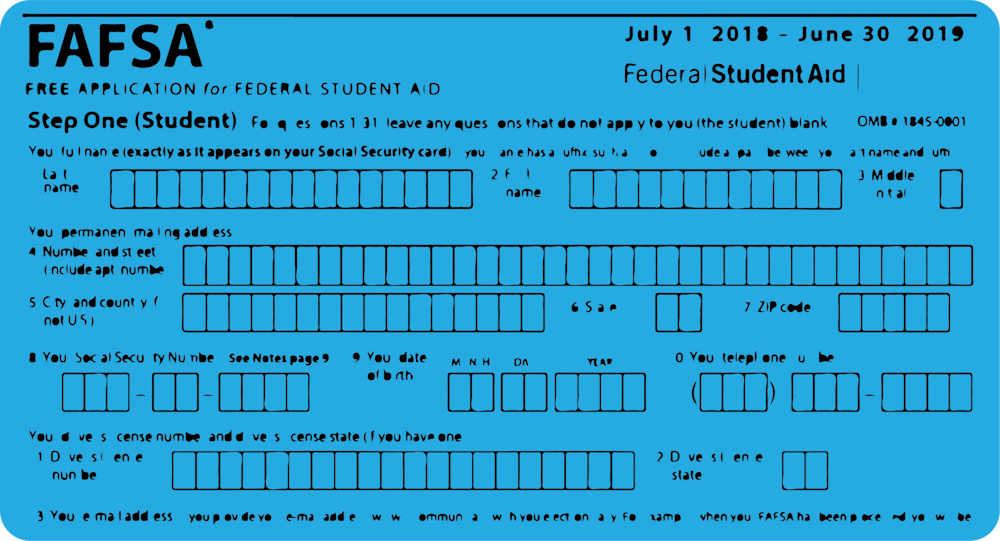Many delays and errors plagued the 2024-2025 FAFSA form for incoming students. The initial release date was pushed back from the usual Oct. 1 date to late December 2023, leaving colleges unable to access FAFSA data until March — when aid offers are typically sent out.
Students and families were in the dark about their tuition bills until after the May 1 enrollment deadline at many universities, including Miami University, complicating the college decision-making process.
FAFSA difficulties for the class of 2028
Issues surrounding the 2024-2025 FAFSA form created significant obstacles for prospective college students nationwide and at Miami, affecting their ability to financially plan for their education.
“It was awful, to put it bluntly, for students and families this spring,” said Bethany Perkins, director of admissions at Miami. “It put a serious strain on offices like the Office of Student Financial Assistance … and, of course, the Office of Admission working with students and families.”
The FAFSA Simplification Act, passed by Congress in December 2020, brought many changes to the application process this year. It aimed to expand federal Pell Grant eligibility by linking eligibility to family size and the federal poverty level.
The bill changed the Expected Family Contribution (EFC) to the Student Aid Index (SAI), contributing to a significantly lower minimum family contribution than before. The bill also rewrote the form, intending to simplify and speed up the process.
Despite these intentions, the delay in its release date and subsequent glitches caused a nationwide decline in the number of student applications.
“Not only was the FAFSA delayed, it was completely rewritten,” said Beth Johnson, director of student financial assistance. “[This] meant that we had to rewrite all of our processes from the ground up.”
According to figures from the Office of Student Financial Assistance, the number of students applying for federal aid at Miami declined from 61.2% last year to 58.3% this year.
Miami extended the traditional May 1 enrollment deadline to May 15 this year for all students and provided additional extensions to families that needed them.
“We were one of the first public institutions in Ohio to release all of our aid offers,” Perkins said. “I am grateful to say that all of our students had official aid offers in hand before our deadline of May 15.”
Enjoy what you're reading?
Signup for our newsletter
Miami released aid offers to students in two batches on April 29 and May 3 this year because of the errors and FAFSA rejections on student applications. The correct offers were sent out in the first batch, and then Miami fixed the rest and sent them out less than a week later.
Johnson said many of the rejections and errors were due to poorly written questions on the FAFSA form.
“For example, one of the questions on the FAFSA form was, ‘Are you interested in applying for a federal direct unsubsidized loan only?’ It was intended for students whose parents aren’t able or refuse to contribute toward their education,” Johnson said. “A lot of students would check yes to that question … and then immediately their FAFSA was rejected.”
Although the Department of Education reworded the question in February, Johnson said it “didn’t help the situation at all.”
As a result of an overwhelming amount of confusion, the Offices of Admission and Financial Aid had to maintain constant communication with parents and students.
“At one point, when things grew really complicated, I did a video message to students and families rather than [a] long, drawn-out email,” Perkins said. “It was just as important to communicate empathy and concern for their well-being and for their ability to make really good decisions and to give them the information.”
Despite the difficulties created by the 2024-2025 FAFSA process, overall aid increased. Miami had the lowest percentage of Pell-eligible students among Ohio public universities in 2023 at 15.1%. Johnson said that figure slightly increased to 15.8% this year.
While the number of Pell Grant-eligible students remained relatively stagnant, Johnson said Miami saw its largest increase in aid provided through federal work-study programs, with the allocation from the federal government doubling.
“Pretty much anybody that has financial need, no matter how much would qualify for work-study if they wanted it,” Johnson said.
After months of back-and-forth with the Department of Education over the issues resulting from the 2024-2025 FAFSA, Perkins and Johnson said they are “relieved” that all aid offers have been sent out.
“I will not lie that on May 3, when all aid offers went out the door … I called [Johnson] just in tears with how grateful I was,” Perkins said. “It takes a university community to bring in a class and … to be that dependent on my colleagues in financial assistance to do right by students and to do a fantastic job was very trying and also very rewarding.”



